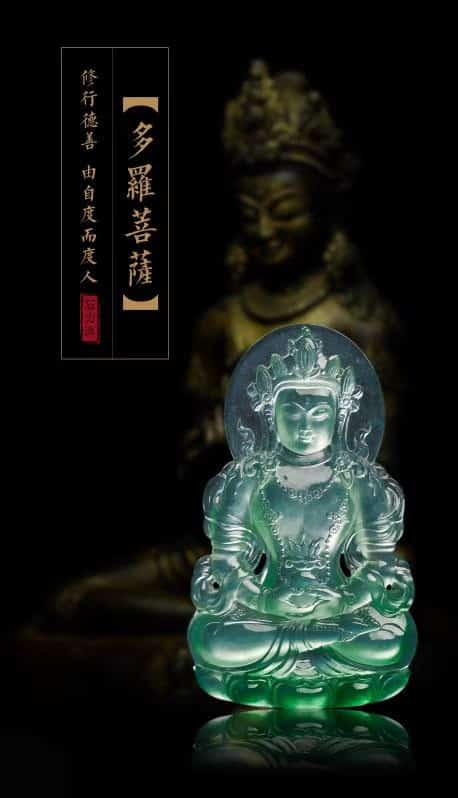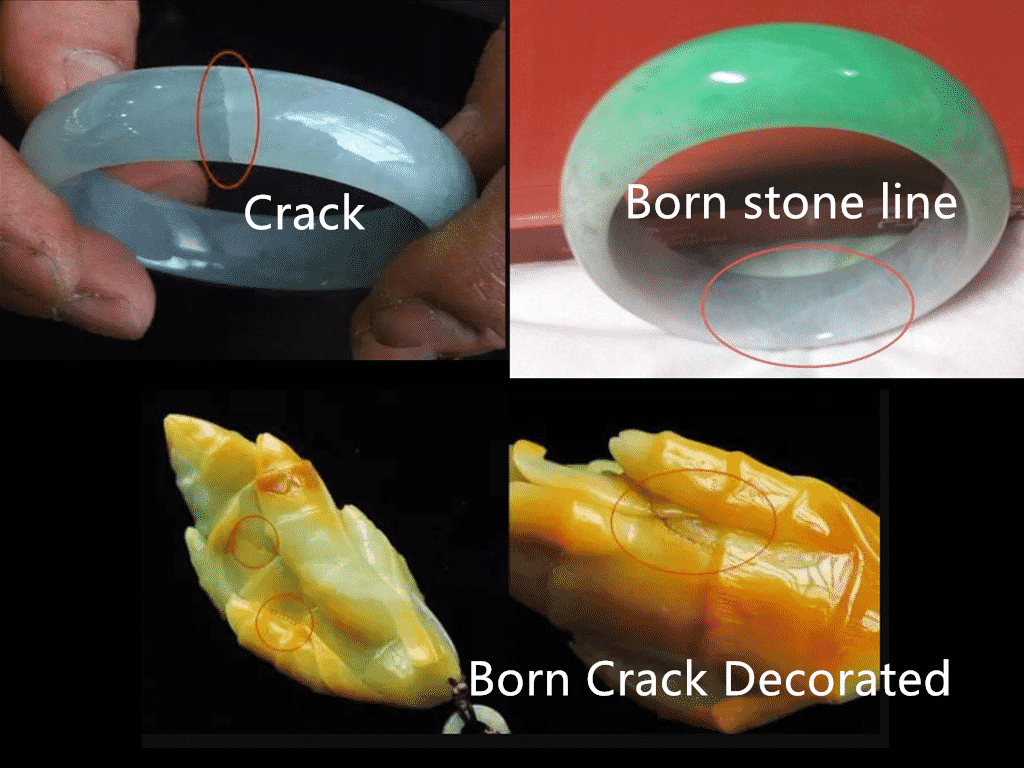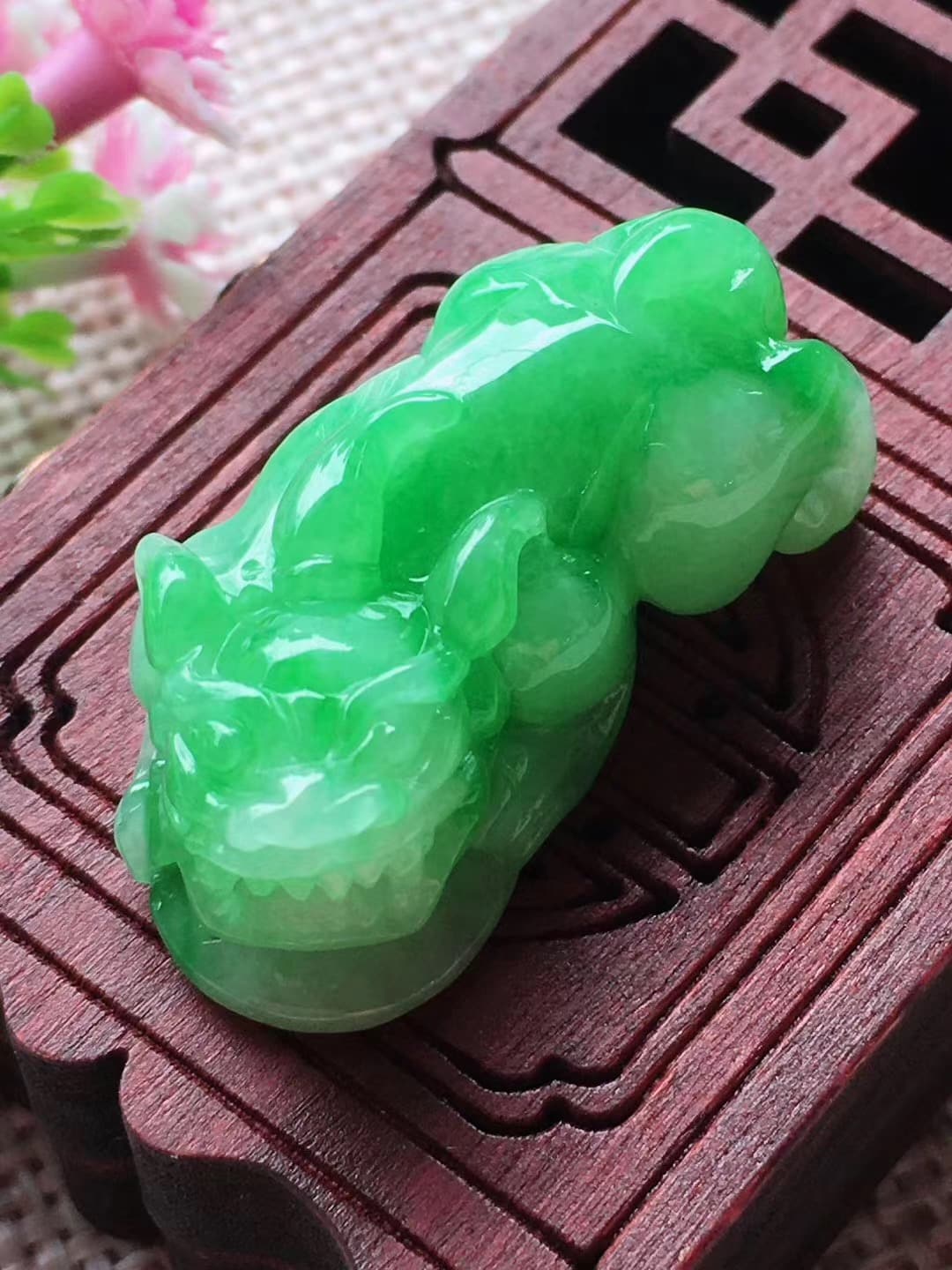Physical definition of type A jade and types of jade
Jade refers to jadeite, its hardness (hardness) should be 6-7; specific gravity 3.32——3.45; the refractive index is approximately 1.66-1.7.
Jade-glass Type: As the name implies, it is as transparent as glass, and its quality is very fine. The hardness is about 7, which is the highest class of jade.
Jade-ice type: the hardness of the ice species is also high, second only to the grass species, it refers to the seed water of different colors of jade. It’s whiter than glass, and its transparency is worse than glass.
glutinous rice type: The glutinous rice type jade belongs to the middle grade of jadeite, with a hardness of approximately 7, second only to the ice type, the color is like glutinous rice and the clarity is not as strong as ice. White as rice but less transparent in color.
Oily Green type: The oil-green type is dark green jadeite with a grayish or blueish color, The light transmittance also varies greatly depending on the stone, but the color is dark.
Dry green jadeite type: Dry green jadeite with a bright green color but the poor transmission of light. The color is green like malachite, often with black, The specific gravity is heavier than other jade, and the hardness is below 6; the brittleness is large, and the refractive index is about 1.75 higher than other jade.


Different between Nephrite and jadeite
Calcium magnesium silicate Nephrite and sodium aluminum silicate Jadeite are the most common jade types when people speak about “jade.”
Both exist in a beautiful shade of olive green, but there are also differences in their color. While their compositions, crystal structures and densities are different, they are both identical in appearance and durability, and both have metaphysical characteristics that are equally important.
Myanmar is the main source of grade A Jade, but it can also be found in Japan, New Zealand, Siberia, Australia, Canada and the United States. They have the same chemical name, but those who can make city jewelry can only be found in Myanmar.
Helen Jade Jewellers provides you the exceptional service special to Gemstone Jewellers.
Why women love jade bangle
The jade bracelet is a rare and attractive female amulet. Jade bracelet wearing makes the woman look gorgeous, elegant, gentle and beautiful. Not only can the jade bracelet play a beautiful decorative function but it can also promote human health. The early appearance of jade bracelets was merely a sign of religious beliefs amongst people. The value and style of jade bracelets, they didn’t pay much attention. The appearance of jade bracelets was no modern need.
Jadeite is a product of Nature. The nature of the universe is condensed, and hundreds of millions of years are created. the jadeite jade spirituality does not only interact with the wearer’s heart but also improving the wearer’s mind to purify the soul and boost the feeling. It also has a powerful psychological effect and is responsible for exorcising and preventing the evil spirits.
With science creation it is found that the jade bracelet contains several trace elements. The jade bracelet can selectively absorb the trace elements that are lost in the human body through contact and friction with the human skin during the wearing process, in order to achieve a balance between Body Yin and Yang Qi and blood.it is an energy stone balanced your life and health.

Jade pendant has many themes, they have different meaning and protective.
a mythical ferocious beast, the people used to create evil spirits, and valuable things.
Wearing Buddha and Guanyin can kill evil, bless peace, and bless happiness.
Zhong Kui is known to be capable of capturing ghosts. Prevent the ghost get into your home

The different types of flaws of jade.
In addition to color and transparency, there is another important factor affecting the value of jade. If it comes to flaws, you should distinguish whether it is created naturally or a crack, that is really worth considering the day after, but for those flaws that affect just aesthetics, the crack that will affect the firmness. This is a cracked bangle, we can see it would break one day.
During its formation, Jadeite experienced countless geological movements. Numerous squeezes, crashes, and pulls have caused the jadeite crystal itself to be broken, creating cracks. Some of the cracks healed gradually with time’s precipitation and restored the original firmness but left scars. It is the healing crack, usually called the stone born lines. This is a born stone line that is inside the jade bangle.
Natural lines of stone are often inside the stone, and can’t be felt with nails. worth tens of millions jades, such stone lines are inevitable. Instead of discarding it, we have to find the right way to carve them enlarge the value, we use the direction of the crack to carve a crack-like pattern on this bergamot, so that the crack looks less obvious, which also makes jade show the greatest value.
Even the finest collection-grade jadeite will inevitably have the existence of small stone lines, The born stone line is a testament to the thousands of years, so do not pay much attention to the flaws, but rather enjoy the natural characters.





